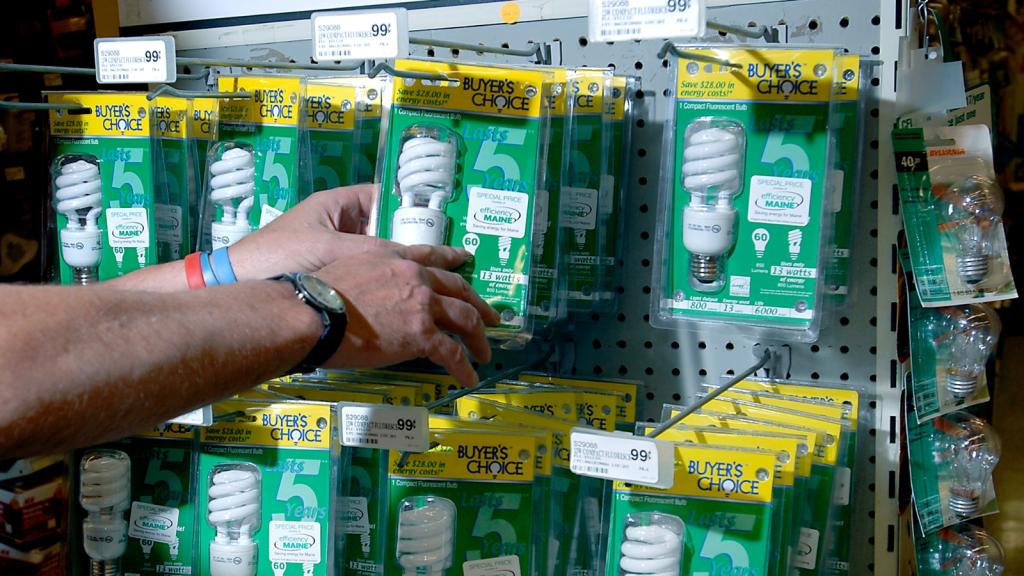 A serialized version of ILSR‘s new report, “Democratizing the Electricity System,” part one of five.
A serialized version of ILSR‘s new report, “Democratizing the Electricity System,” part one of five.
The 20th century of electricity generation was characterized by ever larger and more distant central power plants. But a 21st century technological dynamic offers the possibility of a dramatically different electricity future: millions of widely dispersed renewable energy plants and storage systems tied into a smart grid. It’s a more democratic and participatory paradigm, with homes and businesses and communities becoming energy producers as well as consumers actively involved in designing the rules for the new electricity system.
Several decades ago, several people – Amory Lovins in Brittle Power, David Morris in Self-Reliant Cities – explored the implications of this decentralized vision. Most importantly, this vision represents a transformation in the ownership and control of the electricity system. Instead of a 20th century grid dominated by large, centralized utilities, the 21st century grid would be a democratized network of independently-owned and widely dispersed renewable energy generators, with the economic benefits of electricity generation as widely dispersed as the ownership.
This graphic, adapted from the European Commission, illustrates the paradigm change (click for a larger version):
The difference in the ensuing decades is the commoditization of distributed energy production (e.g. solar panels sold at Home Depot), the renewable energy industry growing to $100 billion, and the critical mass of such production on the electricity grid.
In the last two years a number of events have forced policymakers at the local, state and national level to grapple with the implications of a decentralized grid system and how the policies they adopt help or hinder such a 21st century energy system:
- Sixteen (16) states of the twenty-nine (29) that have renewable energy mandates have added mandates for solar and other distributed energy technologies.
- Germany installed an astonishing 7,400 megawatts (MW) of distributed solar PV in 2010. It has begun to change its incentive program to not only maximize solar power but on-site self-reliance via a combination of distributed generation, demand shifting and storage.
- In this country’s largest solar market, California, the number of rooftop solar PV systems has grown from 500 to 50,000 in 10 years. The number of buildings with rooftop solar in San Francisco alone has increased from 9 to 7,050 in the same period.[1]
- California’s governor announced his goal for the state to generate 12,000 MW from renewable distributed power plants by 2020. The state public utility commission has established a new renewable auction mechanism for up to 1,000 MW of distributed renewable energy projects 20 MW and smaller.[2]
- Southern California Edison recently completed its solicitation for 250 MW of distributed solar PV on dozens of commercial rooftops with the price of electricity expected to be lower than natural gas generation.[3]
- And many more.[4]
These events coincide with a dramatic rise in the amount of renewable energy on the U.S. electric grid. Although total renewable generation is only 10 percent of total electricity, in some regions the concentration has reached 15 to 20 percent or more. The rapid growth rate of this distributed renewable energy means that regulatory and utility policy must change immediately, to plan appropriately for the coming distributed generation grid.
Why Distributed Generation?
There are a number of benefits to a democratized electricity system, in addition to the monumental shift toward energy self-reliance.
- Vast potential and deployment speed: Nearly every state could meet 20 percent of its electricity needs with rooftop solar PV alone. Two-thirds of states have sufficient wind, solar and geothermal power to get 100 percent of their electricity from in-state (and distributed) sources.[5]
Distributed generation can also come online much faster than centralized generation. For example, while the entire world has installed barely 1,000 MW of centralized solar thermal power, Germany installed 7,400 MW of distributed solar PV in 2010 alone.[6] Similarly, large wind projects often experience long delays awaiting new transmission capacity whereas distributed wind projects can often connect to the grid without significant infrastructure upgrades. Ontario’s feed-in tariff program, for example, provides fast-tracking for small-scale distributed generation (projects smaller than 500 kilowatts) because it rarely creates significant grid impacts.
- Favorable economics: Some renewable energy technologies (with federal subsidies) already compete toe-to-toe with fossil fuel generation, and others – like solar – are rapidly becoming less expensive. Furthermore, the vast majority of economies of scale for renewable energy technologies are captured at a modest size, well within accepted size definitions of distributed generation.
- Local ownership and political support: The economic impact of locally owned renewable energy projects can be several times greater than absentee owned ones, and distributed generation lends itself to ownership. Such local ownership also dramatically increases local acceptance of more renewable energy production. And because it’s a more efficient use of the electricity grid, distributed generation reduces the number of political fights over new high-voltage transmission lines.
The political support for distributed generation also stems from its inherent democratic nature. By dispersing the sources of power generation and opening th
e grid to producers large and small, a distributed grid allows for maximum participation in power production, creating a constituency for supporting the expansion of clean energy and distributed generation. - Value to the grid: Distributed generation is more resilient to disruption, with power generation spread over thousands of generators and over a wide geographic area. This makes it harder for a large area to be without power and easier to maintain grid stability.
A distributed grid can also be more efficient, by maximizing the potential of existing infrastructure. In California, the Public Utility Commission requires utilities to publish data on “sweet spots” on their grids, to assist distributed energy developers plug in where it’s of greatest benefit. This efficient usage can reduce the demand for new grid infrastructure, particularly expensive high-voltage transmission lines.
For an exhaustive list of the benefits of distributed generation, see the 207 benefits of distributed resources in the Rocky Mountain Institute’s Small is Profitable.[7]
The Potential for Distributed Generation
Most U.S. states have enormous potential for renewable electricity production that could be developed in a distributed, democratic fashion. In our 2009 report, Energy Self-Reliant States, we provided maps of the renewable energy potential by state based on current electricity demand. The following map illustrates the potential state self-sufficiency from rooftop solar PV alone.
State Potential Rooftop PV:
Almost every state could get 20 percent or more of its electricity from rooftop solar. This does not include the electricity generated from ground mounted arrays. Sufficient sunshine falls on every state to meet all its electricity needs from the sun provided that enough energy storage was also available. The following map shows the portion of a state’s land area that would be required to meet all its electricity needs with solar power. California’s 0.32% is equivalent to about half of Orange County; New York’s 0.66% is equivalent to less than half of Long Island. While a fully renewable, distributed grid would benefit from greater diversity than just solar power, the map provides a picture of the potential to power every state’s grid with local, distributed electricity.
State land area required to maximize solar PV:
 The exponential growth rate of distributed generation like solar PV suggests that even if distributed generation makes up a small portion of generation now, its growth profile suggests that within the planning horizons of many utilities, it will comprise a significant and possibly majority portion of generation.
The exponential growth rate of distributed generation like solar PV suggests that even if distributed generation makes up a small portion of generation now, its growth profile suggests that within the planning horizons of many utilities, it will comprise a significant and possibly majority portion of generation.
Germany, for example, deployed over 10,000 MW of solar PV projects in the past two years, over 80 percent on rooftops. Distributed generation is poised for massive growth in the United States.
To read more about democratizing the electricity system, click through:
- Part 2 (The Economics of Distributed Generation)
- Part 3 (The Political and Technical Advantages of Distributed Generation)
- Part 4 (Regulatory Roadblocks to Democratizing the Electricity System)
- Part 5 (Overcoming the Roadblocks to Democratizing the Electricity System)
- Download the full report.
Endnotes
[1] Del Chiaro, Bernadette. California’s Solar Cities. (Environment California Research & Policy Center, Summer 2009). Accessed 3/21/11 at http://tinyurl.com/mnhhld.
[3] Gipe, Paul. New California Governor Jerry Brown Calls for Feed-in Tariffs. (Renewable Energy World, 1/3/11). Accessed 6/20/11 at http://tinyurl.com/26hxmvy.
[4] Farrell, John. Southern California Edison Buys 250 MW of Distributed Solar PV for Less Than Electricity from Natural Gas (Energy Self Reliant States blog, 2/2/11). Accessed 02/02/2011 at http://tinyurl.com/5sod46o.
[5] Other events indicating a distributed generation future:
- Vermont has introduced a pilot CLEAN Contract (a.k.a. feed-in tariff) program that offers a long term premium price for wind, solar PV, hydro, landfill gas, farm methane, and biomass electricity generation under 2 MW. Hawaii offers a similar program, but with a project size cap of 5 MW.
- Gainesville, FL, San Antonio, TX, and Sacramento, CA’s municipally owned electricity utilities have introduced long term premium priced contracts for distributed solar power.
- The California Public Utilities Commission (CPUC) has required utilities to identify “sweet spots” on their distribution lines to encourage distributed generation that maximizes the benefits to the existing grid.
- In Minnesota, the state legislature required the state’s utilities to identify a no-cost and least-cost plan for adding 1,200 MW of distributed wind power.
- In some regions, renewable energy represents over 15 or 20 percent of grid electricity, providing the first field tests for a future grid based on distributed generation.
- Several communities, including San Diego, CA, and many universities have conducted energy independence studies to determine how to get 100 percent of their electricity from nearby, renewable resources. Boulder, CO, is considering municipalization of its electricity system to increase renewable energy production.
- In April 2011, the Distributed Network Protocol (DNP) Users Group issued the first industry standard to allow solar inverters to interact efficiently with other “smart grid” technologies, allowing utilities to “talk” to and control these devices if necessary.
- The Federal Energy Regulatory Commission has proposed that demand response be compensa
ted as if it were actual generation, giving it sounder footing against power generators. - Electric vehicles are entering the market. More than 100,000 are expected to be on U.S. roads by 2012.
- A number of utilities in Texas, Minnesota, North Carolina and elsewhere are testing energy storage technologies to smooth production from variable renewable energy generators.
- Several European nations have enacted standards for new buildings to be net zero energy consumers–any use of imported fossil fueled electricity is offset by on-site generated energy that is exported to the grid, by 2020.
[6] Farrell, John and David Morris. Energy Self-Reliant States, 2nd edition. (ILSR, October 2009). Accessed 6/15/11 at http://tinyurl.com/yaywu42.
[7] Gipe, Paul. New Record for German Renewable Energy in 2010. (wind-works.org, 3/24/11). Accessed 3/29/11 at http:// tinyurl.com/4af2avk.
[8] Lovins, Amory, et al. Small is Profitable: The Hidden Economic Benefits of Making Electrical Resources the Right Size. (Rocky Mountain Institute, 2002).






